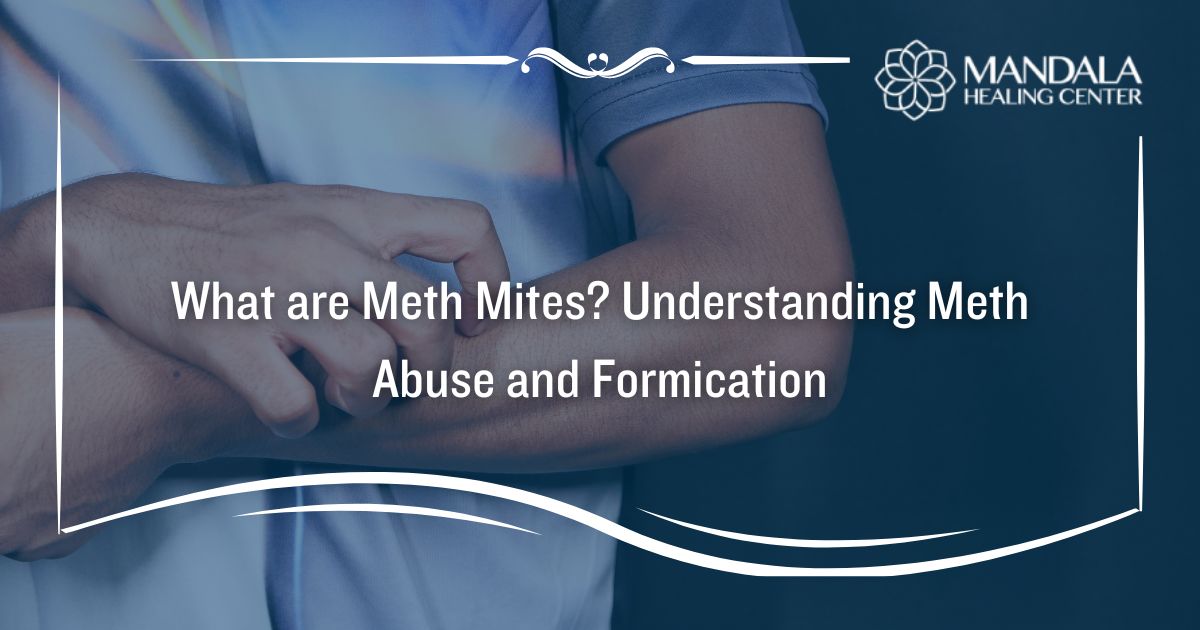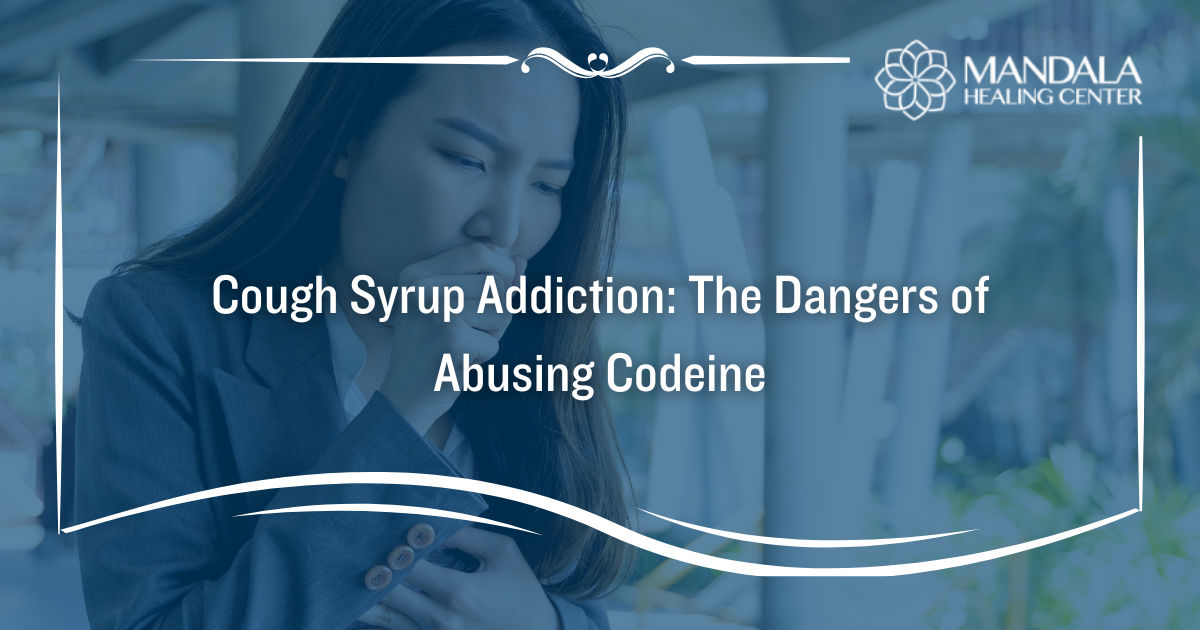Methamphetamine, commonly known as meth or crystal meth, is a potent and highly addictive stimulant drug that affects millions of lives worldwide. It wreaks havoc on users’ physical and mental health and leads to a range of dangerous side effects, including hallucinations and delusions. One of the more peculiar and disturbing hallucinations associated with methamphetamine abuse is the phenomenon known as “meth mites.”
What is Methamphetamine (Meth)?
Methamphetamine is a powerful, illicit central nervous system stimulant drug that can be addictive after just one or two uses. It is often produced illicitly in clandestine labs and sold illegally on the street. Meth is sometimes referred to by one of its street names like “crystal,” “crystal meth,” or “ice.”
When abused, methamphetamine produces a rush of energy, increased alertness, and a sense of euphoria. People often binge on meth and stay awake for several days. The effects of meth are usually followed by a profound “crash,” leaving users feeling fatigued and depressed.
Meth abuse is a widespread issue across the United States. In 2021, about 2.5 million people abused methamphetamine and about 1.6 million were addicted to it. The same year, approximately 32,537 people died from an overdose involving psychostimulants (primarily meth).
Understanding the Risks of Meth Abuse and Addiction
Meth is one of the most dangerous and addictive illegal drugs, and its highly addictive nature makes it challenging for users to quit. Many meth users find themselves trapped in a vicious cycle of drug-seeking behavior, tolerance, and withdrawal. Some of the potential consequences of meth abuse are:
- Physical health problems – Meth abuse takes a serious toll on the body. It can lead to severe weight loss, dental problems (often referred to as “meth mouth”), cardiovascular issues, and even organ damage. Chronic meth use can result in long-term health problems, including addiction, and a decreased quality of life.
- Mental health issues – Meth use is associated with mental health issues such as anxiety, paranoia, hallucinations, and even psychosis. These symptoms can persist long after a person stops using the drug. A common mental phenomenon often experienced by meth users is formication, where people hallucinate bugs crawling on or under their skin.
- Social and economic impacts – Meth addiction can destroy personal relationships, lead to job loss, and result in legal troubles. It can also strain healthcare and social welfare systems.
- Overdose – Meth overdose is a real and deadly risk. It can cause heart attacks, strokes, seizures, and death.
What are Meth Mites?
Meth mites, also known as “formication,” are a bizarre and disturbing side effect associated with meth abuse. The term “formication” is derived from the Latin word “formica,” meaning “ant.” When individuals experience formication, they experience the distressing sensation that tiny insects, often described as mites or bugs, are crawling on or beneath their skin.
While this sensation is psychological and not caused by actual insects, it is a prevalent and troublesome symptom among methamphetamine users. Meth mites can also cause an intense itching or burning sensation, leading users to scratch or pick at their skin in an attempt to remove the bugs they are hallucinating. This scratching and picking can result in open sores, scarring, and serious skin infections, further exacerbating the health issues associated with meth abuse.
What Causes Meth Mites?
The exact cause of meth mites, or formication, is not fully understood, but there are several factors that contribute to this phenomenon in individuals abusing meth. These include:
- Excessive dopamine release – Meth increases the release of dopamine in the brain, which is associated with pleasure and reward. However, excessive dopamine release can lead to hallucinations and sensory distortions, including the sensation of crawling insects.
- Sleep deprivation – Meth users often experience prolonged periods of wakefulness due to the drug’s stimulant effects. They may stay awake for several days at a time, and sleep deprivation is widely known to cause hallucinations and sensory disturbances.
- Skin picking – As meth users scratch and pick at their skin in response to the crawling sensation, they can sustain skin damage and open sores. These sores can become infected, further contributing to discomfort and distress.
- Paranoia and anxiety – Meth abuse can lead to heightened levels of paranoia and anxiety. These mental states can intensify the perception of meth mites, making the sensation even more distressing.
Are Meth Mites Dangerous?
Formication is merely a hallucination, so it isn’t dangerous in itself. However, hallucinating bugs crawling on or under the skin can be scary and distressing, and users may inflict severe consequences on themselves in an attempt to alleviate their symptoms. Some of the risks and implications associated with meth mites include:
- Skin damage from constant itching or picking at the skin
- Infections from open wounds
- Severe psychological distress in the form of anxiety or paranoia
- Social isolation due to embarrassment, shame, or emotional anguish
Treatment for Meth Abuse and Addiction
Recovery from meth addiction and the associated symptoms, such as meth mites, is possible for anyone as long as they seek the right treatment. The path to healing typically integrates a multifaceted approach, combining medical and behavioral interventions tailored to each individual’s needs.
An essential starting point is medical detoxification, often carried out under professional supervision. This critical step ensures the safe management of meth withdrawal symptoms to minimize discomfort and prevent a relapse.
After detox, therapies like cognitive-behavioral therapy (CBT) and contingency management are commonly used to help individuals achieve sobriety. These therapeutic modalities allow individuals to confront and navigate the complex emotional and behavioral symptoms of their addiction.
After rehab, participation in support groups, such as Narcotics Anonymous (NA), can significantly bolster the recovery journey. These communities provide a sense of belonging and encouragement that can support long-term sobriety.
Find Help for Meth Abuse and Addiction Today
At Mandala Healing Center, we inspire healing in our patients through compassionate care. Going beyond the conventional approach of detoxification, patients at our facility are inspired to fully heal in an environment designed to nourish their entire being.
Clients are taken on a journey of healing through complete immersion into evidence-based clinical modalities, multifaceted alternative therapies, and expert medical management, allowing them to fully detox and recover from drug and alcohol addictions. Through a program of care designed to encourage change, a foundation is created that allows clients to find their higher purpose and reclaim their lives.
If you or a loved one are suffering from meth addiction or would like to learn more about your treatment options, please reach out to our dedicated admissions counselors today.
References:
- National Institute on Drug Abuse (NIDA): Methamphetamine DrugFacts, Retrieved September 2023 from https://nida.nih.gov/publications/drugfacts/methamphetamine
- National Institute on Drug Abuse (NIDA): What is the scope of methamphetamine use in the United States? Retrieved September 2023 from https://nida.nih.gov/publications/research-reports/methamphetamine/what-scope-methamphetamine-misuse-in-united-states
- National Institutes of Health: Neurologic Manifestations of Chronic Methamphetamine Abuse, Retrieved September 2023 from https://www.ncbi.nlm.nih.gov/pmc/articles/PMC3148451/
- National Institutes of Health: Neurobiology and Clinical Manifestations of Methamphetamine Neurotoxicity, Retrieved September 2023 from https://www.ncbi.nlm.nih.gov/pmc/articles/PMC6135110/












